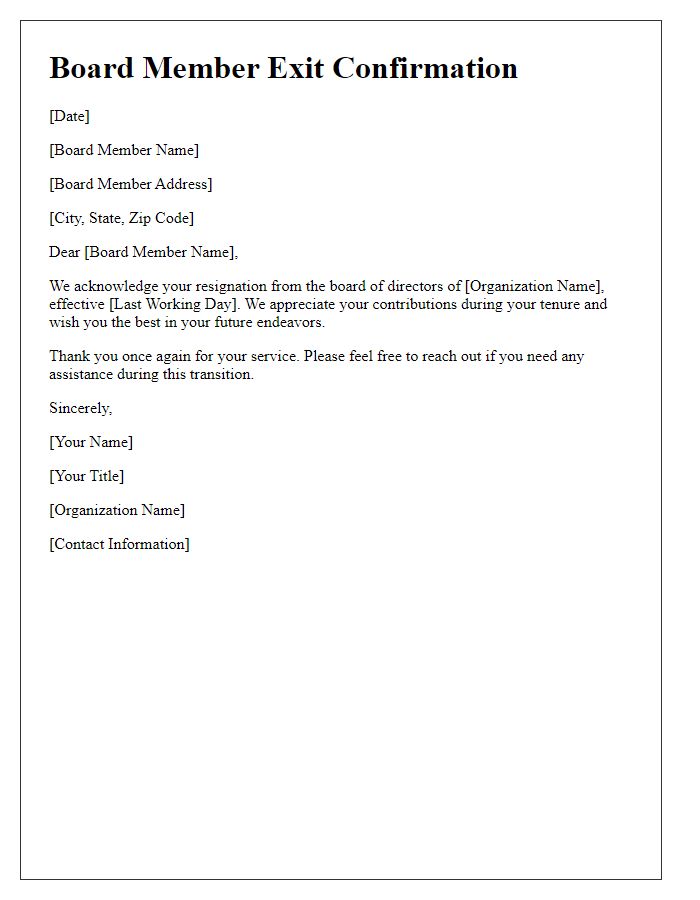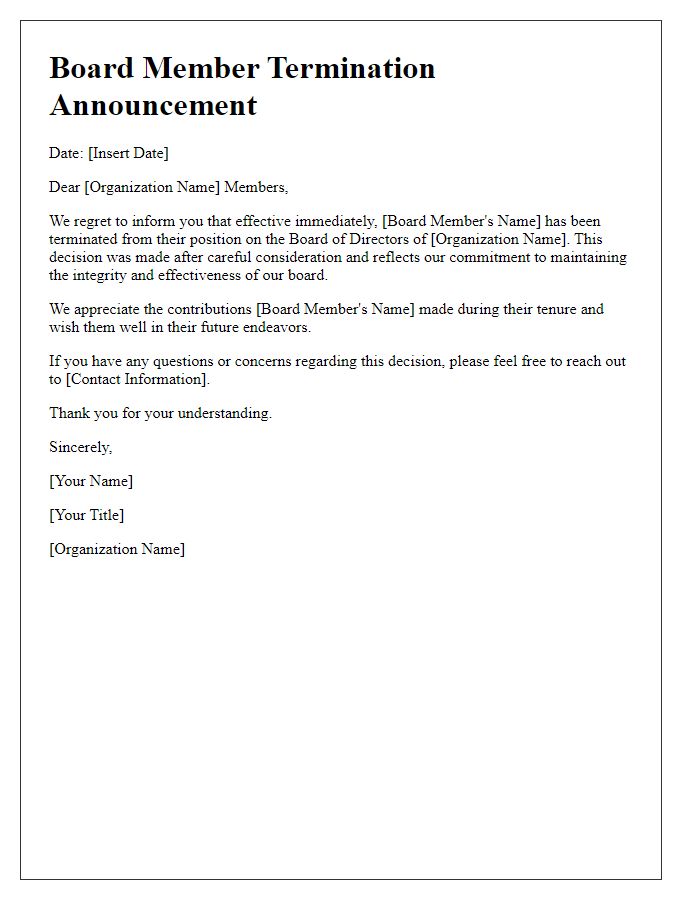Are you facing the challenging task of drafting a letter for board member termination? It can feel like a daunting responsibility, but with the right approach, you can navigate this sensitive situation with professionalism and clarity. The key is to communicate your message with transparency while maintaining respect for the individual involved. Ready to learn more about how to craft the perfect termination letter? Let's dive in!

Clear statement of termination
Board member terminations are formal processes that require clarity and professionalism. A clear statement of termination should explicitly identify the member being terminated. The statement should outline the effective date of termination, ensuring transparency regarding their departure. The statement may also reference the governing documents, such as bylaws or policies, that support the decision. Additionally, it should acknowledge the contributions made by the member during their tenure, reflecting respect and appreciation for their service. Finally, the statement should include details regarding the transition process or next steps for board operations moving forward.
Reason for termination
Board member termination can stem from various reasons, leading to the necessity of a formal notification. Common reasons include failure to attend scheduled meetings (e.g., absence from more than three consecutive quarterly meetings), violation of corporate governance policies (e.g., conflicts of interest that were not disclosed), and breach of fiduciary duties (e.g., mismanagement or negligence leading to financial losses). Other serious infractions may involve illegal activities (e.g., involvement in fraudulent transactions), conduct detrimental to the organization's reputation, or failing to fulfill the obligations specified in the board member agreement (e.g., not participating in committee assignments). Each of these factors can significantly impact the overall effectiveness and integrity of the board, prompting the need for decisive action.
Effective date of termination
Termination of a board member can have significant implications for an organization. The effective date of termination is crucial, as it marks the point at which the individual no longer holds their position, relinquishing responsibilities, and access to sensitive information. Notifying the board member should be done in writing, detailing the reason for the termination and the final date of their association with the organization. It should also outline the steps for the transition, including return of key materials, such as confidential documents and organizational assets, while ensuring compliance with any legal requirements. Proper communication will maintain professionalism and serve to protect the reputation of the organization.
Acknowledgment of contributions
Acknowledging contributions is crucial in maintaining a positive relationship, even when a board member's tenure is concluding. Each board member plays a vital role in guiding organizational strategy and decision-making. Their insights and expertise help shape the direction of initiatives, such as fundraising campaigns or community outreach programs, often resulting in measurable impacts on growth or member engagement. Recognizing specific contributions, such as leading a successful annual event or spearheading a critical policy change, reinforces appreciation for their dedication to the mission. It's essential to highlight the time invested and the collaborative spirit demonstrated throughout their service, ensuring they feel valued despite the termination.
Information on next steps and formalities
The process for terminating a board member often requires careful consideration and adherence to specific legal and organizational guidelines. Following the decision to terminate, it is essential to notify the affected board member formally, stating the reasons for the termination clearly and respectfully. Additionally, an official meeting must be scheduled, allowing other board members to discuss the separation and its implications. Important documents, such as minutes of the meeting and the termination notice, should be prepared for the organization's official records. Next steps also involve notifying relevant stakeholders, including senior management and shareholders, about the change in board composition. It's crucial to review any contractual obligations or agreements the board member may have had with the organization. Finally, a press release may be considered if the board member's position was public, ensuring that the communication reflects the organization's values and maintains its reputation in the community.













Comments